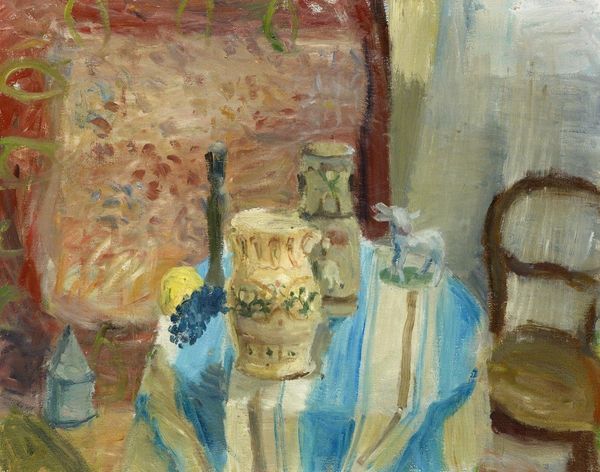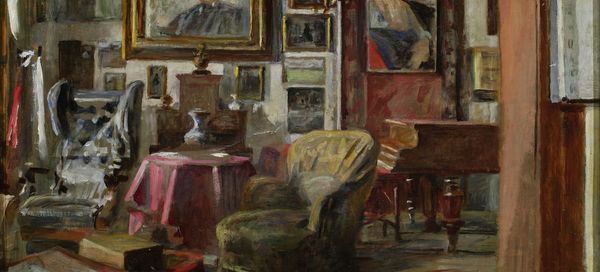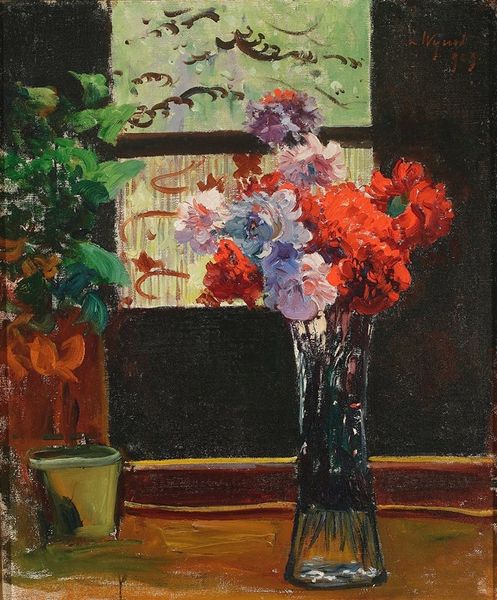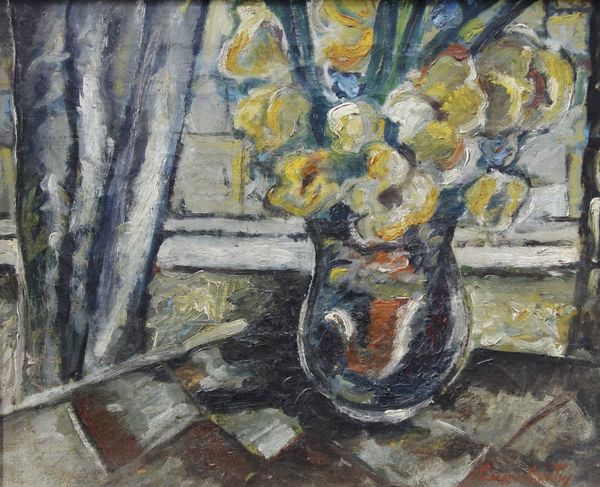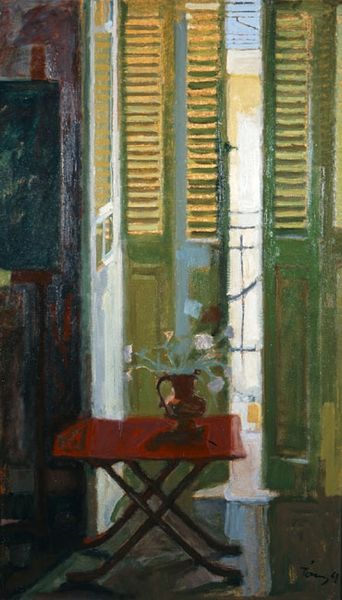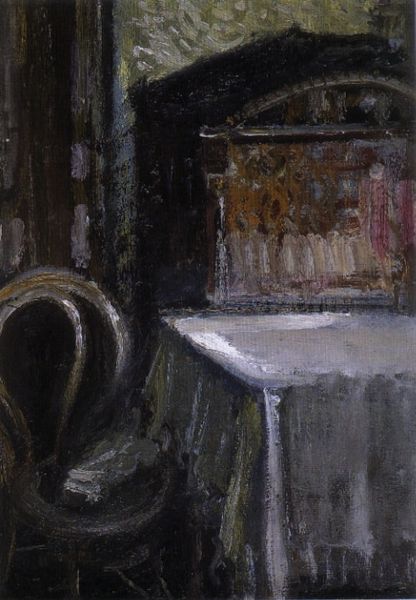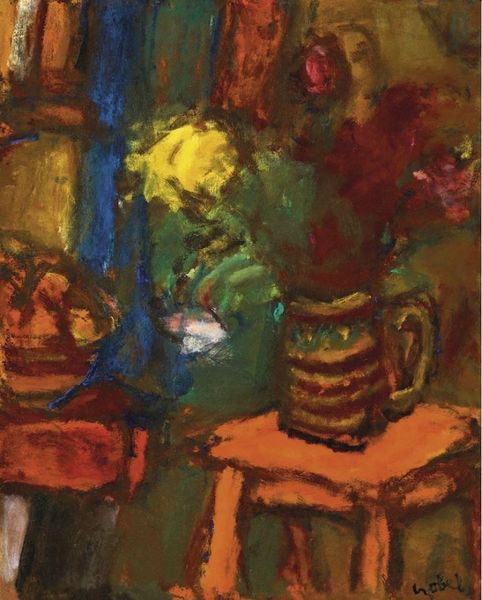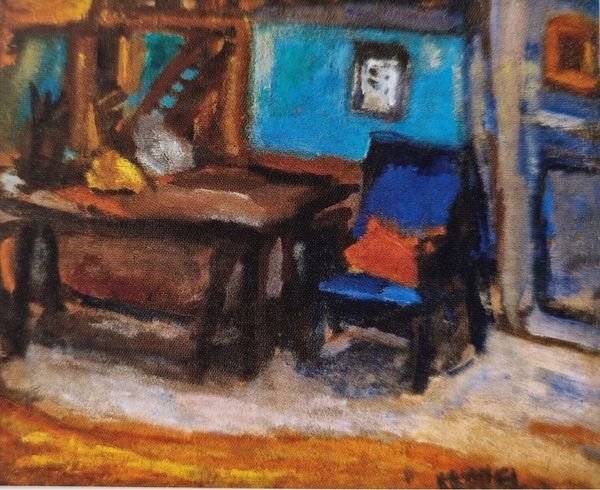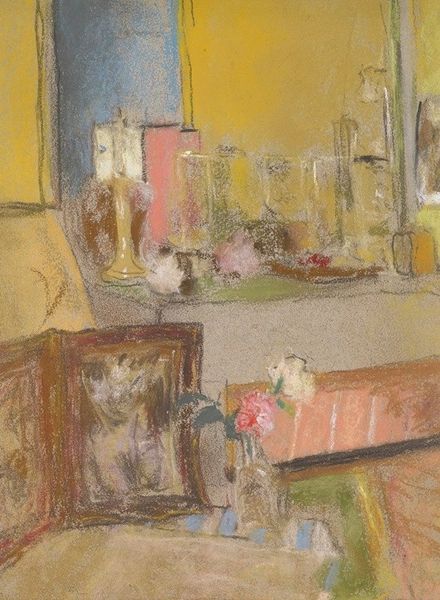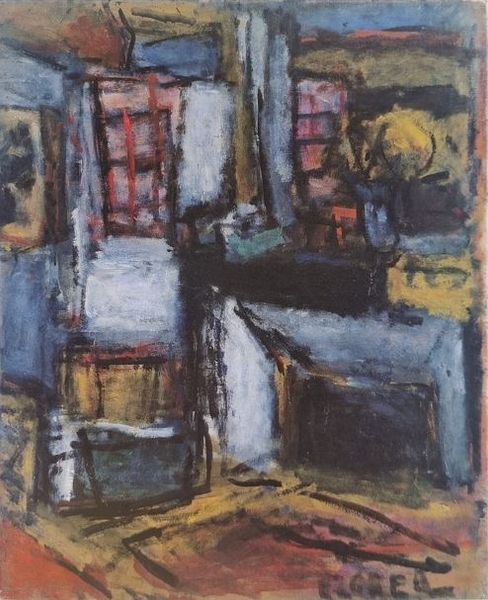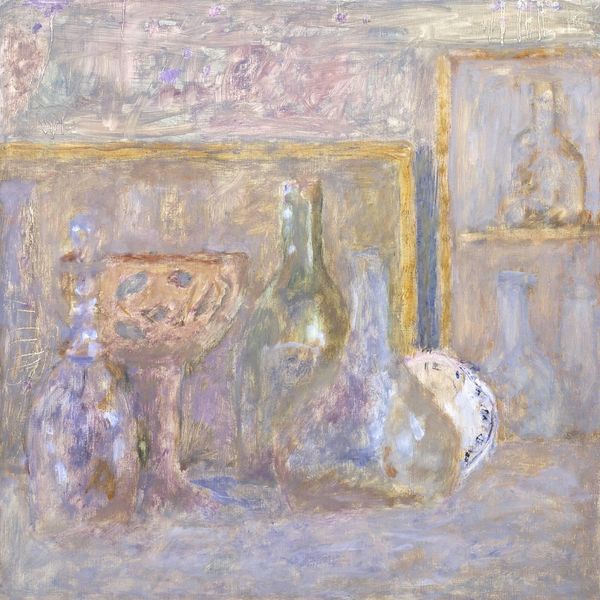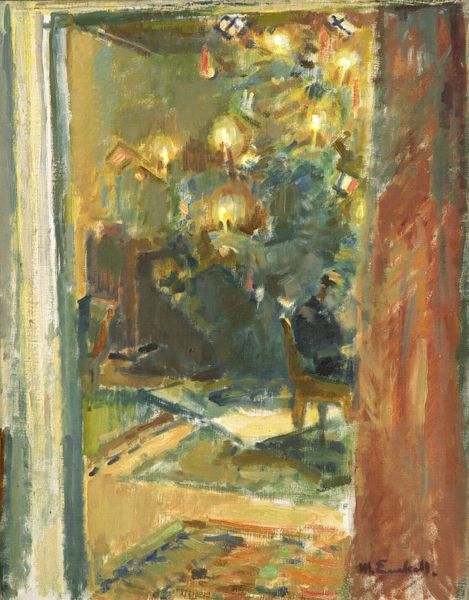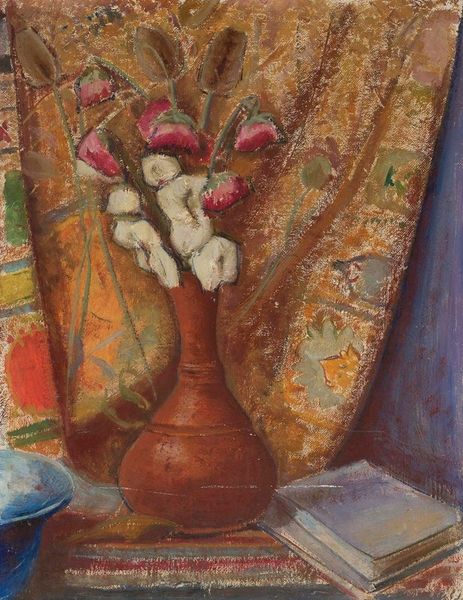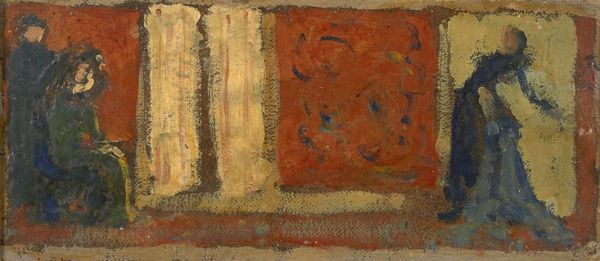
Copyright: Public Domain: Artvee
Editor: Here we have "Still Life," an oil painting created around 1905 by Leon Wyczółkowski. I find it very intimate, almost like peering into a private, colorful world through a doorway. What’s your perspective on it? Curator: Well, I see this painting as a kind of visual negotiation between traditional still life and emerging modern sensibilities. Wyczółkowski, as a figure navigating the politically fraught landscape of early 20th-century Poland, would have understood the still life genre and its traditional symbolism. Think of the Dutch masters, where objects often represent status or morality. But how does Wyczółkowski challenge those norms? Editor: The brushwork seems much looser and more expressive than traditional still life paintings I've seen. The colours, too, are quite bold. Curator: Exactly. This aligns with the rise of Impressionism and Post-Impressionism, right? But it also suggests a shift in how artists were viewing the role of art. Rather than objective representations, artworks were becoming expressions of personal vision, maybe even symbols of national identity in a time of occupation and cultural suppression. Does that shift in artistic intention make you rethink its cultural implications? Editor: Definitely! I hadn't considered the political implications of something as seemingly simple as a still life. Curator: And note the emphasis on surface, on the materiality of paint itself. This pulls attention away from narrative and toward the aesthetic experience. By celebrating colour and brushstroke, Wyczółkowski aligns himself with a broader European movement while carving out a unique voice within a Polish context. How might displaying a work like this—of a domestic, non-religious subject—reflect shifting patronage during the period? Editor: I hadn't thought about how social dynamics may influence these kinds of paintings. Now I have so much to look into. Thanks! Curator: And I’m left pondering the subtle ways Wyczółkowski uses familiar genres to engage in social and political discourse. A very enlightening conversation.
Comments
No comments
Be the first to comment and join the conversation on the ultimate creative platform.
